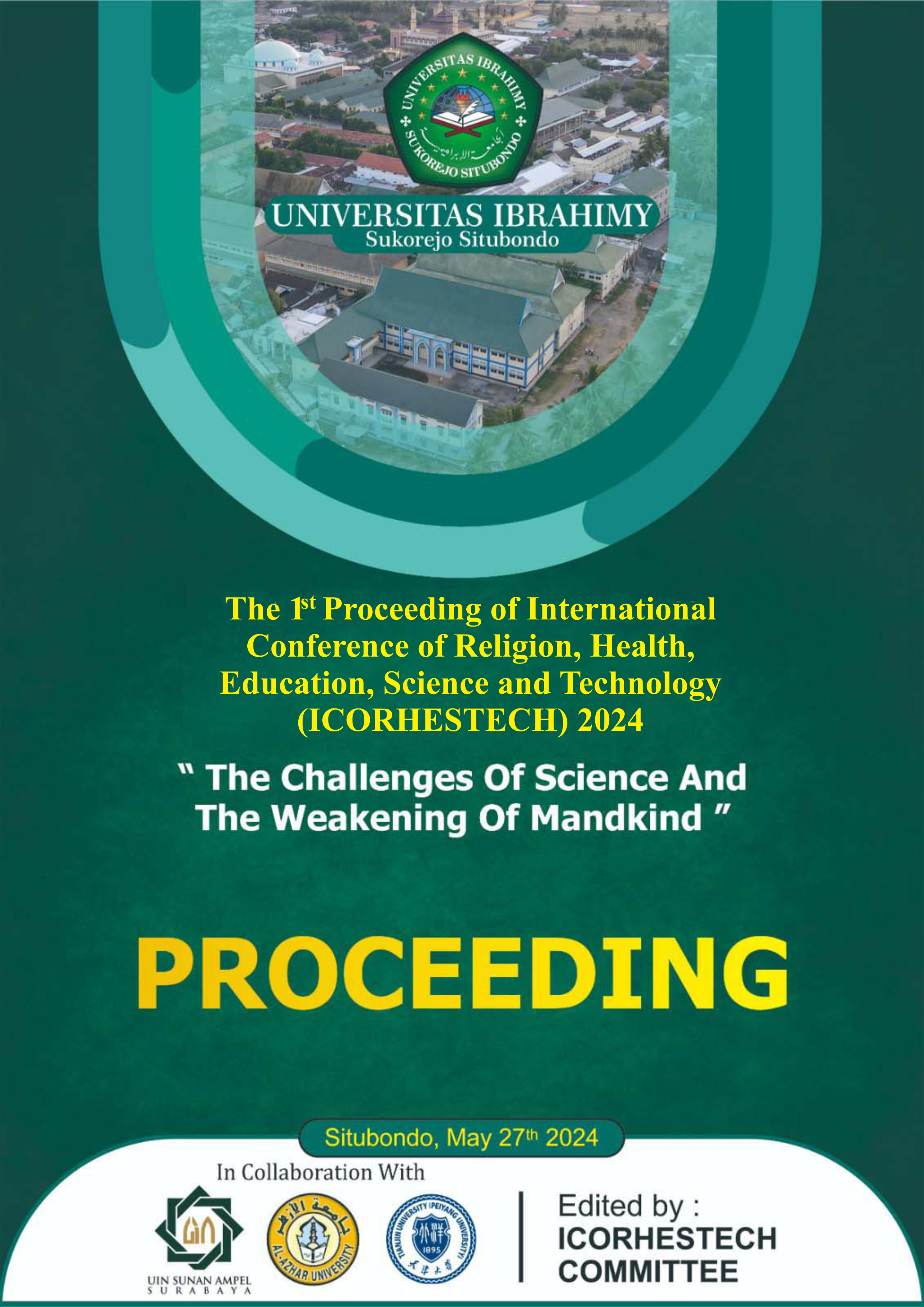Analysis of Students' Mathematical Reasoning Abilities Using a Question Development Model Based on 21st-Century Skills
Abstract
Mathematics is a scientific discipline that contributes a lot to human survival. They will get many things, such as developing reasoning, solving problems, and so on, when facing issues related to mathematics, especially in a century that can be said to be super modern, such as the 21st century, which needs cadres with a high level of reasoning. Mathematical reasoning is one of the competencies that students should have at school. This research aims to determine the level of students' mathematical reasoning abilities in mathematics subjects, especially geometry. The method used in this research is qualitative. The technical analysis in this research is qualitative descriptive data analysis. The techniques used in data collection are test questions and interviews. The research subjects were 16 students, each given the same questions. The research results show that (1) Students in the very-good category are 12.5%, (2) Students in the excellent category are 32.5%, (3) Students in the fair category are 32.5%, (4) Students in the poor category are 22.5%. The analysis results show that the maximum gains are felt by students who often use the question development model. It is hoped that teachers will always encourage their students to take the time to solve mathematical problems, especially those related to geometry, so that their mathematical reasoning abilities develop over time.
References
Azmi, U. (2013). Profil Kemampuan Penalaran Matematika Dalam Menyelesaikan Masalah Matematika Ditinjau Dari Kemampuan Matematika Pada Materi Persamaan Garis Lurus Kelas VIII SMP YPM 4 Bohar Sidoarjo. Institut Agama Islam Negeri Sunan Ampel Surabaya.
Bollen, L., Van Kampen, P., Baily, C., Kelly, M., & De Cock, M. (2017). Student difficulties regarding symbolic and graphical representations of vector fields. Physical Review Physics Education Research, 13(2), 20109. https://doi.org/10.1103/PhysRevPhysEducRes.13.020109
Boote, S. K. (2014). Assessing and understanding line graph interpretations using a scoring rubric of organized cited factors. Journal of Science Teacher Education, 25(3), 333–354. https://doi.org/10.1007/s10972-012-9318-8
Bozkuş, F., & Ayvaz, Ü. (2018). Middle School Mathematics Teachers’knowledge of Mathematical Reasoning. European Journal of Education Studies. https://doi.org/10.46827/ejes.v0i0.1736
Brown, C., & Hurst, A. (2012). VizTouch: automatically generated tactile visualizations of coordinate spaces. Proceedings of the Sixth International Conference on Tangible, Embedded and Embodied Interaction, 131–138. https://doi.org/10.1145/2148131.2148160
Fiantika, F. R., Maknun, C. L., Budayasa, I. K., & Lukito, A. (2018). Analysis of students’ spatial thinking in geometry: 3D object into 2D representation. Journal of Physics: Conference Series, 1013(1), 12140. https://doi.org/10.1088/1742-6596/1013/1/012140
Han, J. (2013). Scientific reasoning: Research, development, and assessment. The Ohio State University. http://rave.ohiolink.edu/etdc/view?acc_num=osu1366204433
Indriati, D. (2018). Profile of mathematical reasoning ability of 8th grade students seen from communicational ability, basic skills, connection, and logical thinking. Journal of Physics: Conference Series, 1008(1), 12078. https://doi.org/10.1088/1742-6596/1008/1/012078
Ivanjek, L., Susac, A., Planinic, M., Andrasevic, A., & Milin-Sipus, Z. (2016). Student reasoning about graphs in different contexts. Physical Review Physics Education Research, 12(1), 10106. https://doi.org/10.1103/PhysRevPhysEducRes.12.010106
Jack, J. P., & Thompson, P. W. (2017). 4 Quantitative Reasoning and the Development of Algebraic Reasoning. In Algebra in the early grades (pp. 95–132). Routledge. https://www.taylorfrancis.com/chapters/edit/10.4324/9781315097435-5/4-quantitative-reasoning-development-algebraic-reasoning-john-jack-patrick-thompson
Kenney, R., An, T., Kim, S.-H., Uhan, N. A., Yi, J. S., & Shamsul, A. (2020). Linear programming models: identifying common errors in engineering students’ work with complex word problems. International Journal of Science and Mathematics Education, 18, 635–655. https://doi.org/10.1007/s10763-019-09980-5
Martínez-Planell, R., & Trigueros Gaisman, M. (2012). Students’ understanding of the general notion of a function of two variables. Educational Studies in Mathematics, 81, 365–384. https://doi.org/10.1007/s10649-012-9408-8
Misnasanti, M., Utami, R. W., & Suwanto, F. R. (2017). Problem based learning to improve proportional reasoning of students in mathematics learning. AIP Conference Proceedings, 1868(1). https://doi.org/10.1063/1.4995129
Mohajan, H. K. (2018). Qualitative research methodology in social sciences and related subjects. Journal of Economic Development, Environment and People, 7(1), 23–48.
Mumu, J., & Tanujaya, B. (2019). Measure Reasoning Skill of Mathematics Students. International Journal of Higher Education, 8(6), 85–91. https://eric.ed.gov/?id=EJ1230582
Muslimin, M., & Sunardi, S. (2019). Analisis kemampuan penalaran matematika siswa sma pada materi geometri ruang. Kreano, Jurnal Matematika Kreatif-Inovatif, 10(2), 171–178. https://doi.org/10.15294/kreano.v10i2.18323
Neogy, S. K., Bapat, R. B., & Dubey, D. (2018). Mathematical programming and game theory. Springer. https://doi.org/10.1007/978-981-13-3059-9
Ormston, R., Spencer, L., Barnard, M., & Snape, D. (2014). The foundations of qualitative research. Qualitative Research Practice: A Guide for Social Science Students and Researchers, 2(7), 52–55.
Priya, A. (2021). Case study methodology of qualitative research: Key attributes and navigating the conundrums in its application. Sociological Bulletin, 70(1), 94–110. https://doi.org/10.1177/0038022920970318
Rahmawati, F., & Setyaningsih, N. (2019). Peningkatan Kemampuan Penalaran Siswa Dalam Pembelajaran Matematika Melalui Pendekatan Realistic Mathematic Education (RME) Berbasis Numbered Head Together (NHT)(PTK Pembelajaran Matematika Siswa Kelas VIII B SMP Negeri 3 Teras Semester Genap Tahun Pelajaran 2018/2019). Universitas Muhammadiyah Surakarta.
Rizta, A., Zulkardi, Z., & Hartono, Y. (2013). Pengembangan Soal Penalaran Model TIMSS Matematika SMP. Jurnal Penelitian Dan Evaluasi Pendidikan, 17(2), 230–240. https://doi.org/10.21831/pep.v17i2.1697
Sole, M. A. (2016). Multiple problem-solving strategies provide insight into students’ understanding of open-ended linear programming problems. Primus, 26(10), 922–937. https://doi.org/10.1080/10511970.2016.1199621
Tohir, M., Maswar, M., Atikurrahman, M., Saiful, S., & Rizki Pradita, D. A. (2020). Prospective teachers’ expectations of students’ mathematical thinking processes in solving problems. European Journal of Educational Research, 9(4), 1735–1748. https://doi.org/10.12973/EU-JER.9.4.1735
Yilmaz, K. (2013). Comparison of quantitative and qualitative research traditions: Epistemological, theoretical, and methodological differences. European Journal of Education, 48(2), 311–325. https://doi.org/10.1111/ejed.12014
Copyright (c) 2024 Abdurrahman Al Kayyis, Mohammad Tohir

This work is licensed under a Creative Commons Attribution-ShareAlike 4.0 International License.








